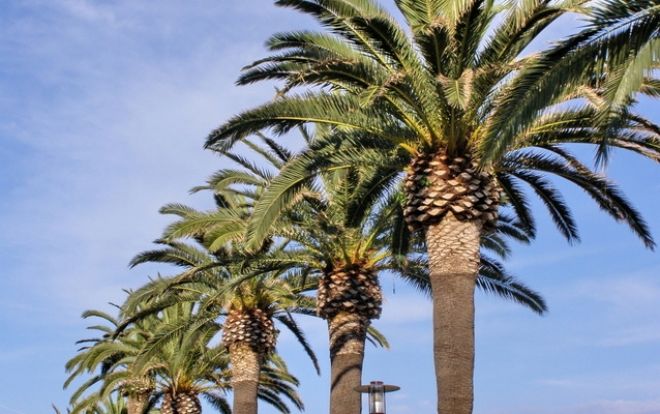Bay Area Pests: The Palm Weevil
Are your palm trees safe from invasive Bay Area pests? The palm weevil, which crossed the US-Mexico border several years ago, is continuing to spread north. A study by the University of California recently uncovered that the palm weevil flies much faster and spreads more rapidly than previously anticipated, and how easily area trees could fall prey to this palm tree pest.
Palm Weevils Pose a Substantial Threat to Trees in the Bay Area
Palm weevils attack many palm species throughout the region, including fruit-bearing date palms, coconut palms, sago palms, African oil palms, and Washingtonia fan palms. If the palm weevil impacts date palms in Imperial and Coachella, their damage could cost millions. If you fear a palm weevil infestation, contact an Arborwell tree wellness expert immediately. Palm weevils can kill a Canary Island palm tree in just 49 days. Hundreds of palms in Tijuana and San Diego have already succumbed to the pest. Worsening matters, the palm weevil also carries a roundworm on its body that is a known vector for red ring disease, which is lethal to date palms.
Black Palm Weevils May Be Harder to Eliminate Than Red Palm Weevils
Unlike their relative, the red palm weevil, brought to the US from Southeast Asia for food, the jet-black South American palm weevil may prove harder to eradicate. The pest is spreading naturally from neighboring Mexico, stretching its wings as far east as Texas and as far north as Bonita, CA. Once infested, a single palm tree could host up to 1,000 weevils. Females of the species are remarkable flyers, capable of covering 61-87 miles in a single day, increasing the likelihood of infestation and widespread destruction.
Timely Pest Control is Crucial to Managing Palm Weevil Infestation
With their prolific procreation and capacity for flight, it is essential that we all work together to prevent and control the spread of the palm weevil. Early identification of infested trees is crucial. If you see signs of crown damage or drooping/dead fronds, we recommend scheduling a complimentary assessment from an Arborwell certified arborist right away. We recommend removing infected trees from your Bay Area apartment community, HOA, commercial office, retail space, industrial park, or government facility immediately. This will not only stop the spread of the pests but prevent collapsing trees from injuring bystanders.
Identify and eliminate palm weevils fast with help from Arborwell Professional Tree Management. Contact us to schedule a complimentary tree assessment from a certified arborist for your San Jose, San Francisco, Walnut Creek, Seattle, Palo Alto, Menlo Park, Hayward, or Oakland commercial property today.








